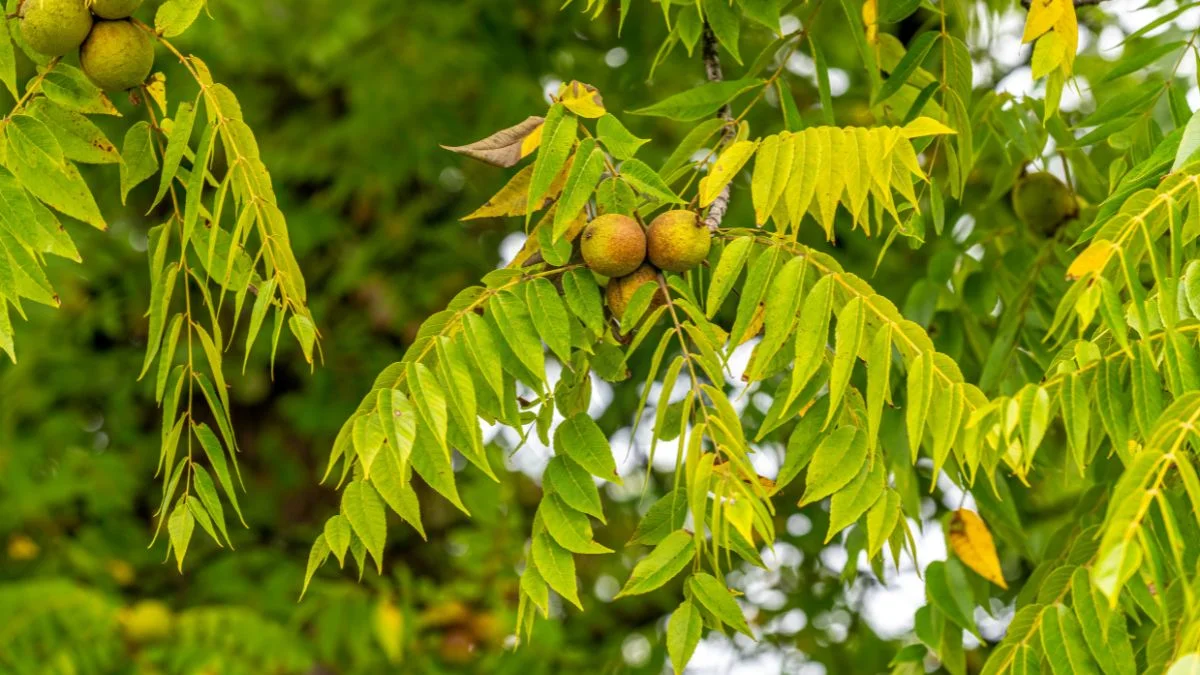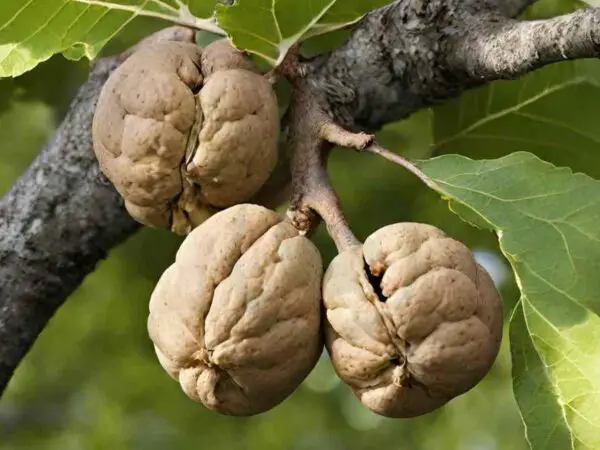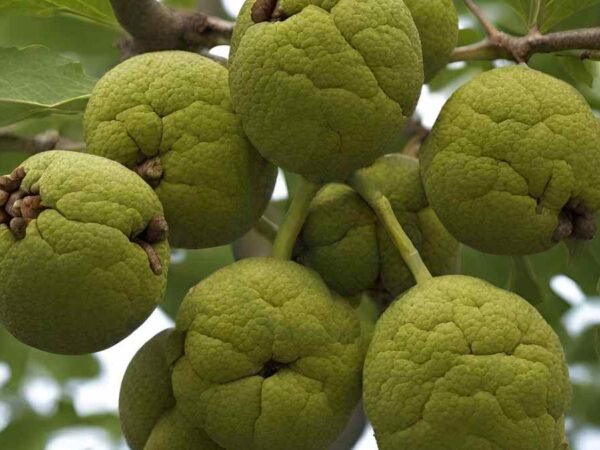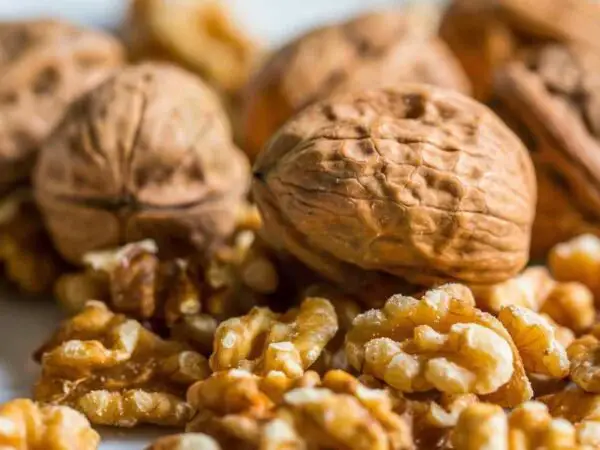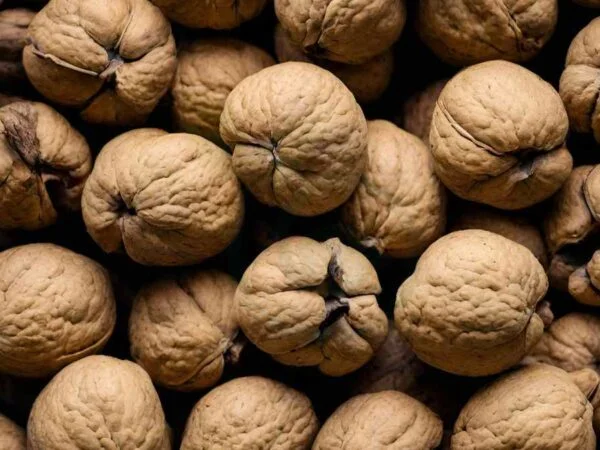Wondering what does a black walnut tree look like? You're in the right place! Let's explore the distinctive features of this fascinating tree together, from its roots to its branches and buds.
A black walnut tree is easily identifiable by its tall stature, reaching heights of up to 100 feet, with a broad crown and deeply furrowed bark. Its compound leaves, composed of smaller leaflets, are arranged alternately along the stem. The leaflets are typically oval-shaped with serrated edges, and when crushed, they emit a distinct odor. In the fall, the leaves turn a vibrant yellow before dropping. The tree produces round green fruits, encased in a thick, green husk that eventually turns black as the fruit matures. Inside the husk, you'll find the hard-shelled walnut, prized for its rich flavor and nutritional value.
Curious to learn more about the ecology, science, and cultural significance of black walnut trees? Stay tuned for additional insights and fun facts!
Key Takeaways
- Identify Black Walnut Trees: Look for the distinct pinnately compound leaves and rough, furrowed bark to recognize black walnut trees accurately.
- Observe Seasonal Changes: Notice the yellow-green foliage in spring, dense leaf canopy in summer, vibrant yellow leaves in fall, and bare branches in winter for seasonal cues.
- Dormant Identification: Even without leaves, notice the dark, deeply furrowed bark and stout branches during the dormant season to identify black walnut trees.
- Appreciate Unique Characteristics: Black walnut trees are known for their valuable wood, edible nuts, and allelopathic properties that inhibit the growth of certain plants.
- Understand Environmental Impact: Recognize the role of black walnut trees in ecosystems and ecology, including their influence on plant growth and soil composition.
- Utilize Practical Uses: Explore the various applications of black walnut wood in furniture making, culinary uses of the nuts, and medicinal benefits derived from different parts of the tree.
Black Walnut Basics
Tree Appearance
Black walnut trees are tall deciduous trees with pinnate leaves that can reach heights between 30 to 130 feet. The shoots and twigs of these trees have chambered pith, which is a unique feature to look for.
Leaf Structure
The leaves of a black walnut tree have an odd-pinnately compound structure with five to 25 serrated leaflets on each leaf. These leaflets exhibit toothed edges, adding to the distinctive appearance of the tree.
Bark Texture
The bark of a black walnut tree is dark and furrowed, providing a rugged appearance. When you run your fingertips over the bark, you can feel its rough texture. The bark surface showcases distinctive patterns that vary from tree to tree.
Fruit Characteristics
Black walnut trees produce rounded, hard-shelled nuts as fruits, which are distinguishable from other types of walnuts. Differentiating between the fruits of black walnut and butternut trees is crucial. The fruits of black walnut trees are oblong, ridged, and typically form in clusters.
Identifying Features
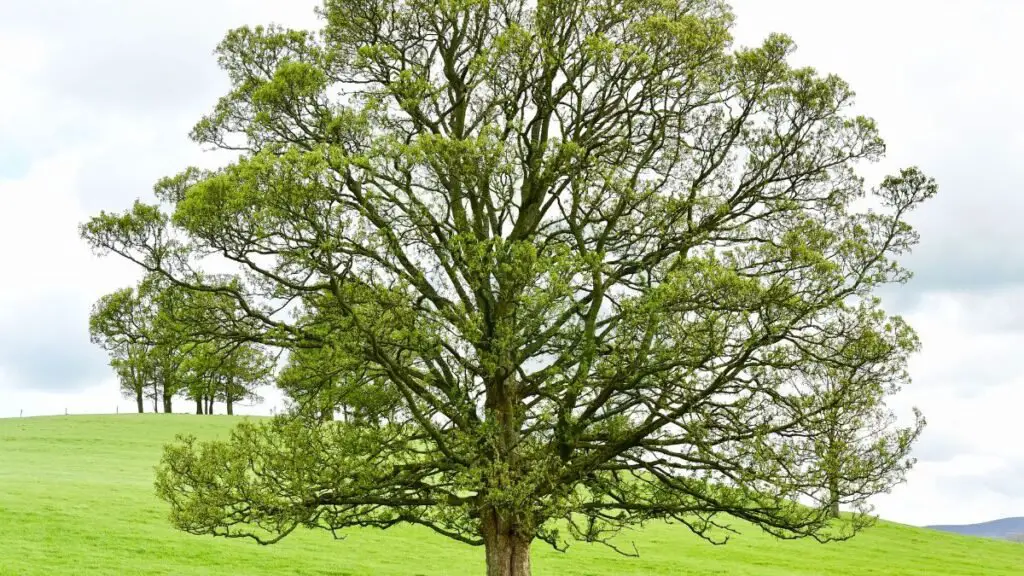
Shape and Size
Black walnut trees exhibit a wide range of heights, typically varying from 30 to 130 feet tall. The nuts produced by these trees are characterized by their rounded shape and hard shells. When observing the tree, you can easily spot the oblong ridged fruits that grow in clusters.
Distinguishing Marks
To identify a black walnut tree, look for leaf scars that resemble an upside-down shamrock. For comparison, butternut trees have a distinctive hairy top fringe on their leaf scars. Black walnut trees possess bundle scars on their leaf scars, aiding in accurate identification.
Leaf Arrangement
When examining a black walnut tree, take note of the pinnate leaves arranged along the branches. Each leaf showcases a symmetrical distribution of leaflets, contributing to its unique appearance. By closely inspecting the branches, you can identify the distinct pattern formed by the leaflets.
Seasonal Changes
Spring Blossoms
Spring brings new leaves to the black walnut tree, with buds growing into fresh green foliage. The tree showcases a vibrant display of spring foliage, adding color to the landscape.
Summer Greenery
During summer, the black walnut tree forms a lush green canopy that provides shade in sunny areas. The dense foliage indicates the tree's active photosynthesis process in the warm months.
Autumn Colors
As autumn arrives, the green leaves of the black walnut tree transition into vibrant hues of yellow, orange, and brown. Witness the beautiful display of colors before the leaves start shedding for winter.
Winter Dormancy
In winter, the black walnut tree enters a period of dormancy with bare branches and no leaves. This dormant phase is crucial for the tree's survival during the cold season.
Dormant Identification
Bark Patterns
Identify unique patterns and textures on the bark surface. Notice variations in bark color and markings, which can range from dark brown to almost black. Observing how bark patterns change with tree age provides valuable insight into the black walnut tree's growth stages.
Branch Structure
Examine the branching pattern of the tree, characterized by a strong central trunk with lateral branches extending outward. Notice the distribution of branches along the trunk, typically arranged in an alternating pattern. Identifying the strength and flexibility of the branches helps understand the tree's ability to withstand various weather conditions.
Bud Appearance
Observe the formation of buds on the branches during dormancy, typically clustered at nodes along the twigs. Notice the protective scales covering the buds, which shield them from harsh environmental factors. By identifying different types of buds present on the tree, such as terminal buds and lateral buds, one can gain insights into future growth patterns.
Unique Characteristics
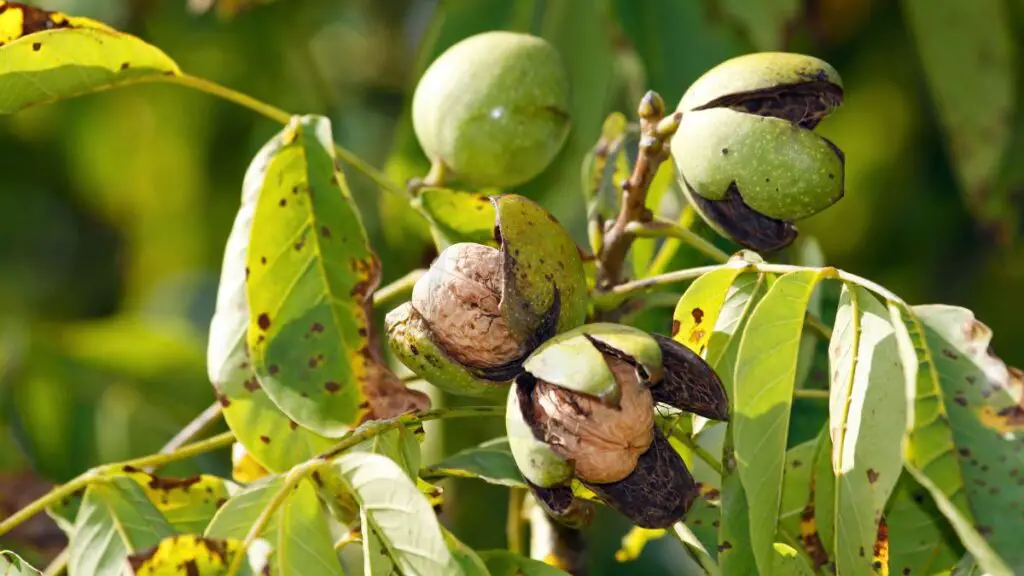
Nut Features
Black walnut trees produce hard-shelled nuts that are medium-sized and round in shape. The nuts have a distinctive wrinkled appearance with a hard shell that encases the edible kernel inside. When compared to butternut nuts, black walnuts are smaller and have a thicker, harder shell.
Wood Texture
The wood from black walnut trees has a smooth texture that feels sleek to the touch. Its grain is fine and even, giving the wood a luxurious appearance. Black walnut lumber boasts a rich, dark color that adds elegance to furniture and decorative items. In terms of durability, black walnut is known for its strength and resistance to decay. It is also highly workable, making it a popular choice for woodworking projects.
Growth Habits
Black walnut trees exhibit a rapid growth rate, reaching maturity in about 30 years. They thrive in well-drained soil with full sun exposure, although they can tolerate various soil types. Black walnut trees are adaptable to different environments, from urban settings to rural landscapes, making them versatile choices for landscaping and forestry purposes.
Environmental Impact
CO2 Absorption
Black walnut trees play a crucial role in carbon sequestration by absorbing carbon dioxide during photosynthesis. This process helps reduce greenhouse gases in the atmosphere. Planting these trees can significantly benefit the environment by aiding in carbon capture.
Trees, including black walnut trees, absorb carbon dioxide from the air and convert it into oxygen through photosynthesis. This natural process is essential for maintaining air quality and combating climate change. By understanding this mechanism, we can appreciate the significance of preserving and planting more black walnut trees.
One of the environmental benefits of planting black walnut trees is their ability to contribute to reducing CO2 levels in the atmosphere. This action helps mitigate the effects of global warming and promotes a healthier ecosystem overall.
Soil Contributions
The allelopathic nature of black walnut trees involves releasing chemicals that can affect other plants in their vicinity. These compounds can inhibit the growth of certain plant species, showcasing the unique characteristics of black walnut trees.
Tree roots release substances known as juglones, which are toxic to many plants and can impact soil health. Understanding these interactions is crucial for managing vegetation around black walnut trees and maintaining a balanced ecosystem.
The impact of black walnut trees on surrounding vegetation extends beyond their allelopathic effects. These trees have been known to influence soil composition and nutrient availability, shaping the ecological dynamics within their environment.
Practical Uses
Culinary Applications
Black walnut nuts are highly versatile in the culinary world, adding a distinctive flavor to dishes. They are commonly used in baking, such as in cakes, cookies, and breads. The rich, earthy taste of black walnuts pairs well with sweet treats, enhancing their overall flavor profile. These nuts can be chopped and sprinkled over salads or incorporated into savory dishes like pesto for an added crunch.
When it comes to incorporating black walnuts into your cooking, there are endless possibilities. From using them as a topping for ice cream to blending them into smoothies for an extra nutritional boost, these nuts can elevate various recipes. Their bold taste makes them a favorite ingredient among chefs looking to create unique and flavorful dishes.
- Black walnuts can be used in both sweet and savory recipes.
- These nuts add a distinctive taste and texture to dishes.
Timber Value
The wood from black walnut trees holds significant economic value, prized for its durability and aesthetic appeal. Due to its strength and beautiful grain patterns, black walnut lumber is highly sought after for furniture making, flooring, cabinetry, and other woodworking projects. Its rich color ranges from light brown to dark chocolate hues, adding elegance to any piece of furniture.
The high demand for black walnut timber is attributed to its natural beauty and versatility in various applications. Whether used in interior design or outdoor construction projects, black walnut wood remains a popular choice among professionals seeking quality materials. Its resistance to decay and stability make it a top choice for long-lasting structures.
- Black walnut wood is valued for its durability and aesthetic appeal.
- The wood's rich color and grain patterns make it ideal for furniture making.
Care and Maintenance
Pests and Diseases
Black walnut trees are prone to pests such as walnut caterpillars and webworms. These insects can defoliate trees quickly. diseases like thousand cankers disease and bacterial leaf scorch can threaten tree health. To protect black walnut trees, regular inspection and early detection are crucial. Implementing preventive measures like proper sanitation practices can help minimize pest and disease issues.
Pruning Techniques
Proper pruning methods for black walnut trees involve removing dead or diseased branches to promote healthy growth. Regular pruning is essential for maintaining tree structure and preventing overcrowding. The best time of year for pruning black walnut trees is during the dormant season in late winter or early spring. This timing helps reduce stress on the tree and encourages vigorous regrowth.
Harvesting Tips
Nut Collection
Harvesting black walnut nuts requires careful consideration of the optimal timing for collection. Early fall is ideal when the outer husk turns from green to yellow or brown. Utilize gloves and a bucket for efficient nut gathering.
Processing Methods
Explore various methods for processing black walnuts, including cracking and extracting techniques. Crack open the hard shell using a nutcracker or hammer, then extract the nutmeat carefully. Preserve harvested nuts by drying or freezing them for long-term storage.
Closing Thoughts
By now, you have gained a comprehensive understanding of black walnut trees, from their distinctive features to their environmental impact and practical uses. Recognizing these trees during different seasons and knowing how to care for them is essential for both enthusiasts and nature lovers. The unique characteristics of black walnut trees offer not only aesthetic value but also various benefits that can be harnessed sustainably. Remember to utilize the harvesting tips provided to make the most out of these remarkable trees.
Take action today by exploring the black walnut trees in your surroundings, appreciating their beauty, and considering how you can contribute to their preservation. Share your newfound knowledge with others to spread awareness about these valuable trees and their significance in our ecosystem.
Frequently Asked Questions
What are the basic characteristics of a black walnut tree?
Black walnut trees have dark, deeply furrowed bark, pinnately compound leaves with 15-23 leaflets, and round to oblong-shaped nuts encased in green husks. They can grow up to 100 feet tall and have a strong taproot system.
How can I identify a black walnut tree?
Look for the unique features of dark, ridged bark; feather-like compound leaves; and large, round green husks containing nuts. The tree's overall shape is tall and straight with a spreading canopy. Observing these traits will help you recognize a black walnut tree.
What seasonal changes do black walnut trees undergo?
During spring, black walnut trees produce new leaves and flowers. In summer, they bear fruit in the form of green husked nuts. Fall brings yellowing foliage before leaf drop in winter. Understanding these seasonal changes aids in identifying black walnut trees throughout the year.
How can I identify a dormant black walnut tree?
In winter, look for the tall silhouette with a broad crown and dark, deeply furrowed bark characteristic of black walnut trees. Despite losing its leaves, the distinctive bark pattern remains visible during dormancy, making it easier to identify.
What are some unique characteristics of black walnut trees?
Black walnuts release juglone into the soil, inhibiting growth of certain plants nearby. They possess valuable hardwood used in furniture making. Their nuts are sought after for their rich flavor and nutritional benefits, making them unique among tree species.
How do black walnut trees impact the environment?
Black walnut trees provide habitat for wildlife due to their large size and nut production. However, they can be allelopathic, affecting nearby plant growth through juglone secretion. Understanding these environmental impacts is crucial for managing ecosystems where black walnuts grow.
What are some practical uses of black walnut trees?
The wood from black walnut trees is highly prized for furniture making and woodworking due to its durability and attractive grain patterns. The nuts are edible and used in baking and cooking for their distinct flavor. Black walnuts offer both aesthetic and culinary benefits.
[Special requests] Remember to focus on concise answers that provide valuable information efficiently while maintaining an engaging tone suitable for readers seeking quick insights about black walnut trees.
Image Source: Paid image from CANVA

